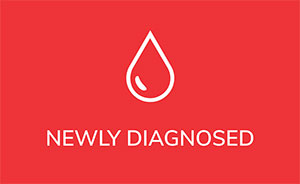By Susan J. Leclair, PhD, CLS (NCA)
The WBC on your CBC report is the total number of white cells found in a volume of blood. In the U.S. it is usually 1 microliter (µL) while in other parts of the world, the Systéme Internationale uses 1 liter (L). A major difficulty with the WBC is when the person has nucleated red blood cells in the blood since they will be counted as if they are white cells and thus, you will occasionally notice a “corrected” white blood cell count.
In the differential, the white cells are then separated into their specific cell types. Given that CLL is a disease of blood cells, the shortcut method called the percentage differential (%) of identifying cell types cannot be used.
The types of white blood cells found in the peripheral blood are:
While I have listed an example of reference ranges, please do not use them as totally accurate. Each laboratory must develop its own sets of ranges based on their instrumentation, techniques, etc.
Susan Leclair, PhD, CLS (NCA) is Chancellor Professor Emerita at the University of Massachusetts Dartmouth; Senior Scientist, at Forensic DNA Associates; and Moderator and Speaker, PatientPower.info – an electronic resource for patients and health care providers.





